With the help of Sustainable Interior Design let’s Crafting Beautiful and Responsible Homes for Tomorrow
In this era of climate change and environmental awareness, the way we design our homes is evolving. Sustainable interior design is not just a buzzword but a design that reshapes our thinking about aesthetics, functionality and responsibility. From materials to energy use, this approach prioritises the home without compromising on style.
Let’s explore the key trends defining sustainable interior design today and how they are transforming living spaces into an eco-conscious paradise.
1. Green design can be laid the foundation by using eco-friendly materials
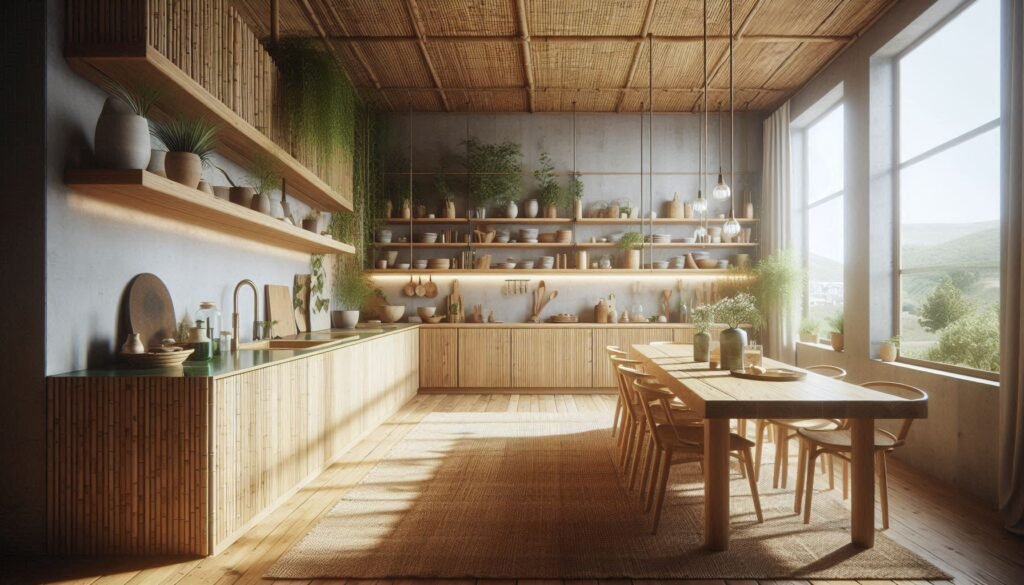
At the heart of sustainable design is the choice of materials. Traditional options like virgin plastic or non-renewable wood are being replaced with alternatives that minimize the harm they cause to the environment.
- Bamboo: Fast-growing bamboo regrows in 3-5 years, making it a superstar for flooring and furniture.
- Cork: Cork harvested from tree bark provides warmth without harming the tree and is naturally antimicrobial.
- Reclaimed wood: Salvaged from old barns, factories or shipping pallets, reclaimed wood reduces deforestation and adds rustic charm.
- Recycled Metal and Glass: Countertops made from recycled glass or light fixtures crafted from reused metals curb waste.
Companies like “TerraMai“ specialize in transforming discarded wood into stunning tables and shelving.
Did you know?
The Forest Stewardship Council (FSC) certifies responsibly sourced wood products, ensuring forests continue to thrive for generations.
2. Energy efficiency: Better electricity, smaller footprint
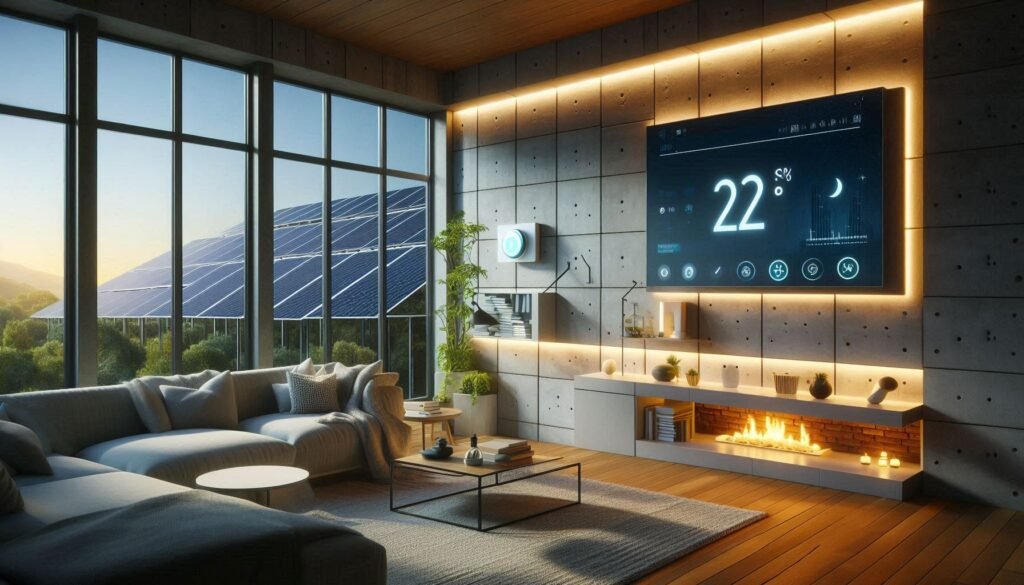
Reducing energy consumption is a pillar of sustainable design. Innovations in technology and passive design strategies are leading the way.
- LED Lighting: Replacing incandescent bulbs with LEDs can reduce energy use by up to 75% and last up to 25 times longer. Pair them with motion sensors or dimmers for additional savings.
- Energy Star appliances: These appliances meet strict efficiency guidelines and use 10-50% less energy than standard models.
- Passive Design: Strategic window placement, insulation, and thermal mass materials (such as concrete floors) use natural heating and cooling, reducing reliance on HVAC systems.
Example: The Bullitt Center in Seattle, called the “greenest commercial building in the world,” uses solar panels and rainwater harvesting for energy-neutral operations.
3. Upcycling and giving new life to old items
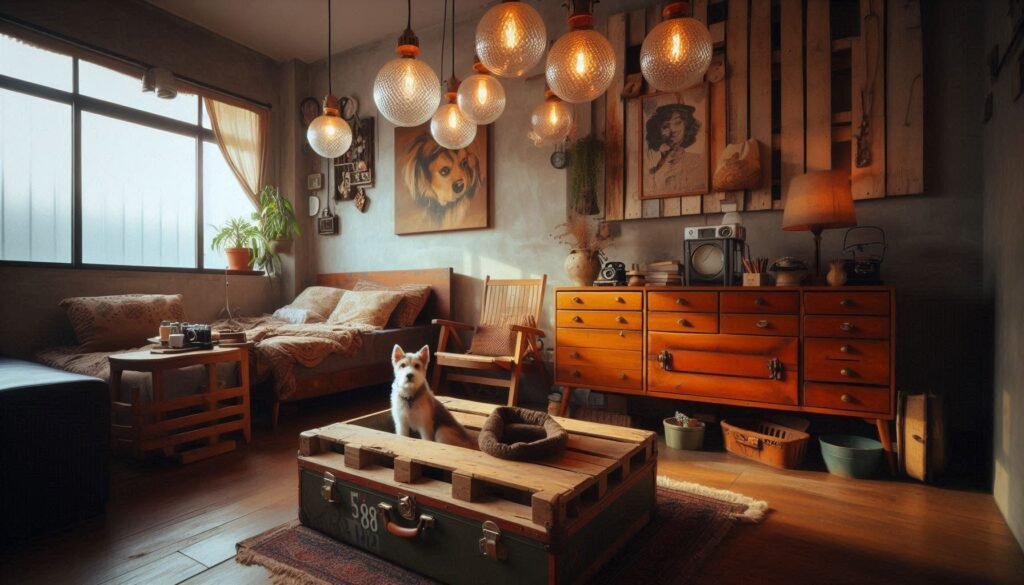
The “reduce, reuse, recycle” mantra is thriving in interior design. Upcycling — turning discarded items into functional art — adds personality while reducing waste.
The Rise of Circular Design
- Vintage Furniture: Searching flea markets or platforms like Etsy for mid-century dressers or retro lamps keeps pieces out of landfills.
DIY Projects
- Old doors can be turned into headboards with a vintage look.
- Jars can be turned into pendant lights.
- An old suitcase can be turned into quirky storage.
Commercial Upcycling Innovators
- “Rehabitat Studio”, this Brooklyn loft redesigned by Rehabitat Studio features 80% upcycled materials, proving sustainability and sophistication go hand in hand.
- “Emeco”, Known for its 111 Navy Chair, made from 111 recycled plastic bottles.
Stat Alert: The Ellen MacArthur Foundation estimates circular design could reduce global CO2 emissions by 40% by 2050.
4. Bringing nature indoors by adopting biophilic design
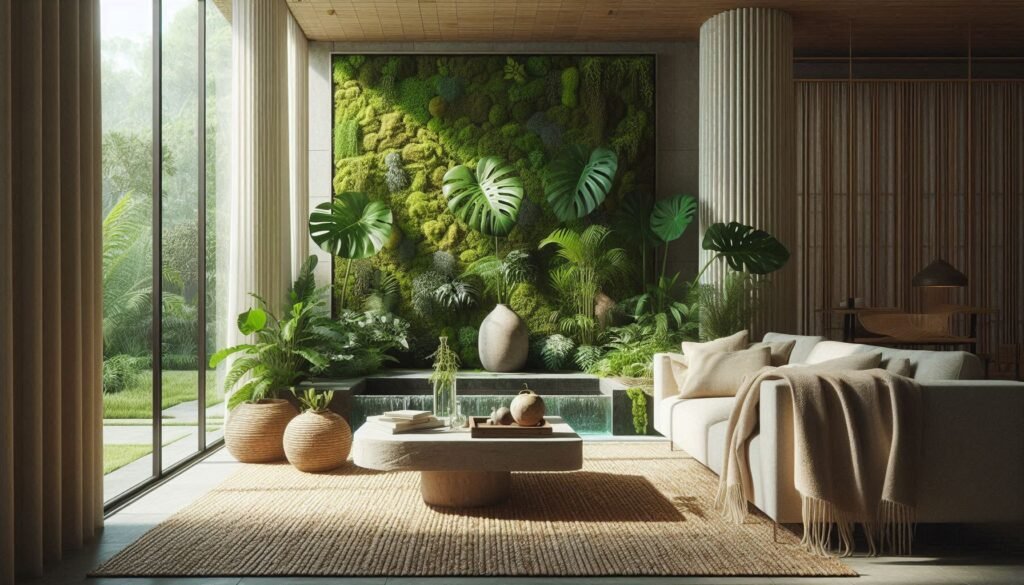
Biophilic design connects residents to nature, improves mental health and reduces stress. This is done by planting trees around your home. So we can say that this trend goes beyond adding a few potted plants.
- Natural light: Large windows and skylights reduce the need for artificial light.
- Living walls: “Biotecture” such as vertical gardens purify the air and increase vibrancy.
- Organic textures: Jute rugs, stone countertops, and linen upholstery are reminiscent of the outdoors.
Statistics:-The 2019 “Human Space Report” found that biophilic design can boost well-being by up to 15% and creativity by up to 6%.
5. Adopt low-VOC and non-toxic finishes to create a healthier home
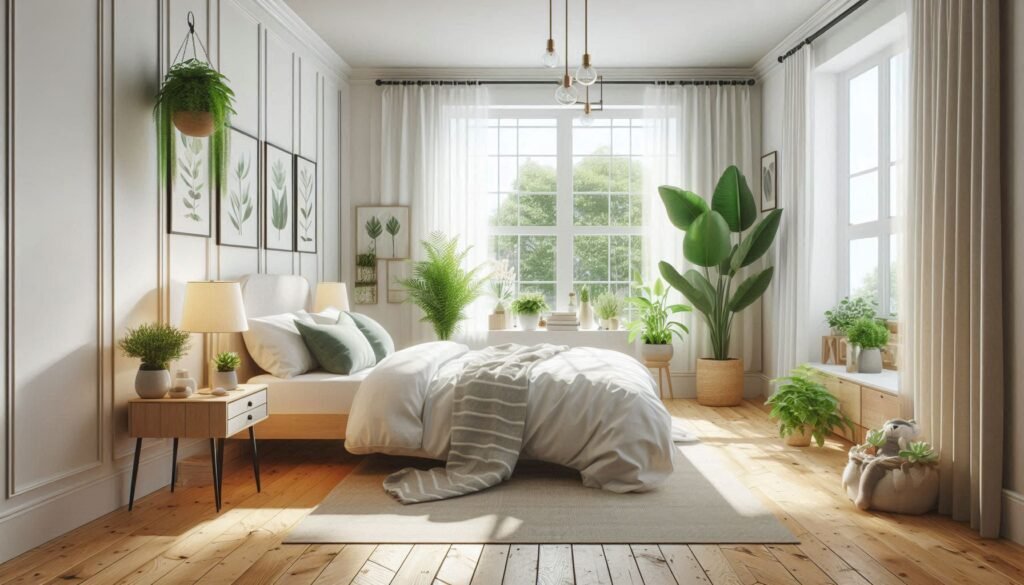
Indoor air pollution can be 2-5 times worse than outdoor air (EPA). Low-VOC (volatile organic compound) paints, adhesives, and finishes reduce this by releasing fewer harmful chemicals.
Key products and certifications
- Paint: Benjamin Moore’s Natura (zero-VOC) and ECOS paint (non-toxic) offer vibrant color without the fumes.
- Flooring adhesives: Choose a water-based glue or click-lock flooring system that requires no adhesive.
- Sealants: Brands like AFM Safecoat offer non-toxic options for sealing countertops or tile.
Did you know?
Greenguard Gold certification ensures products resist harsh chemical emissions
6. Accuracy and sustainability combine Smart home technology
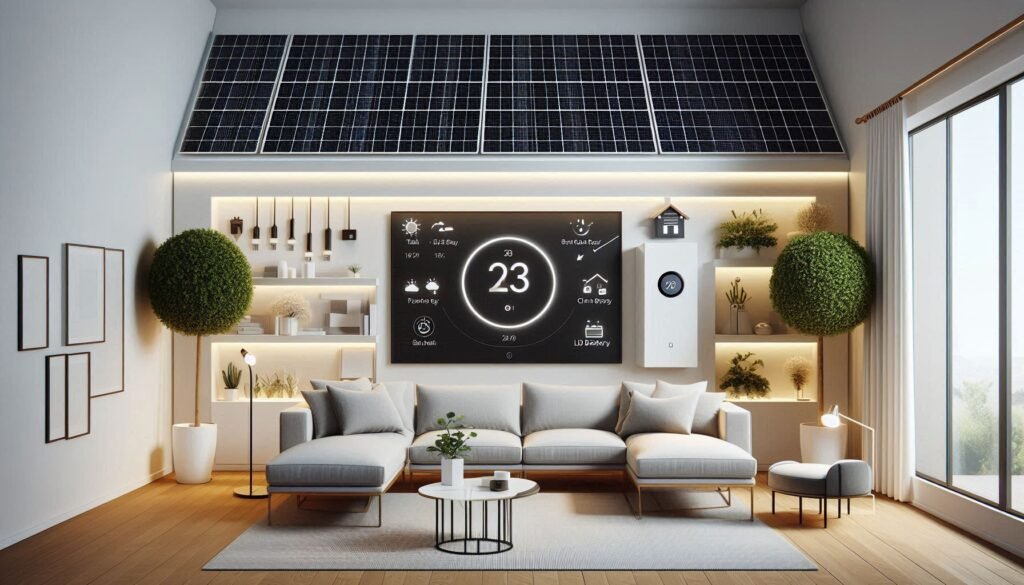
Smart devices seamlessly optimize energy use, combining convenience and conservation.
Energy-saving gadgets
- Learning thermostats: Devices like the Nest or Ecobee adjust the temperature based on occupancy, saving up to 23% on energy bills.
- Smart plugs and power strips: Reduce phantom energy consumption by automatically turning off devices when not in use.
Renewable energy integration
- Solar panels: Residential solar installations have increased by 34% since 2020 (SEIA), reducing reliance on fossil fuels. Companies like Tesla Solar Roof combine panels with traditional roofing materials.
- Home batteries: Store excess solar energy with a system like the LG Chem RESU for nighttime use.
7. Minimalism and multifunctional spaces that have less waste, more purpose
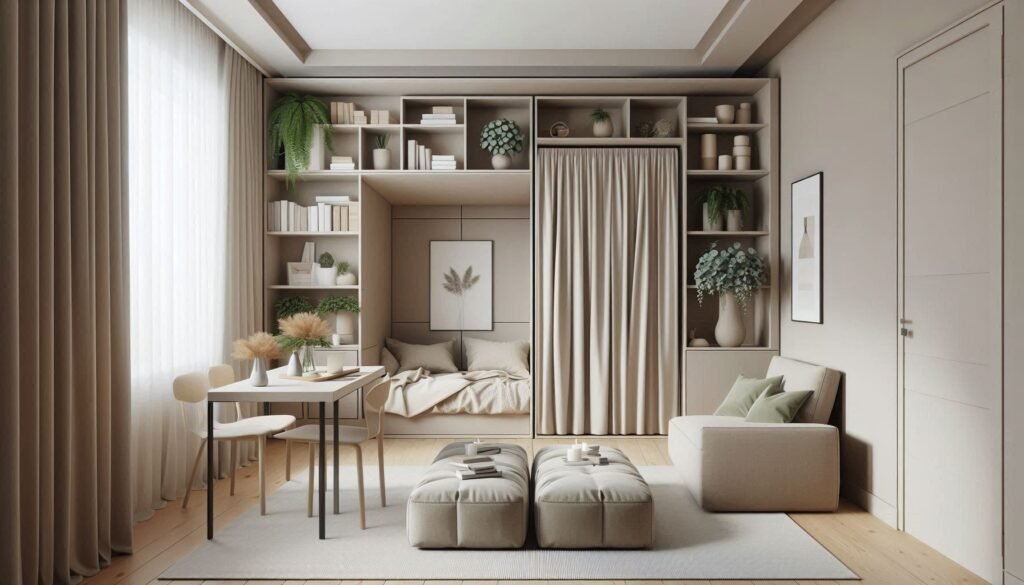
“Less is more” isn’t just stylish—it’s sustainable. Minimalism reduces consumption, while multifunctional furniture (e.g., sofa beds, expandable tables) maximizes space.
The psychology of minimalism
- Decluttering: Marie Kondo’s “Spark Joy” philosophy encourages keeping only what’s essential, which reduces impulse purchases. So, do not keep things that are not necessary in the house.
- Neutral palette: Light, earthy colors (e.g., beige, sage) evoke calm and pair well with natural materials.
Innovative furniture solutions
- Modular designs: Brands like Floyd offer shelving and sofas that adapt to changing needs.
- Convertible pieces: Think Murphy beds, expandable dining tables, or ottomans with hidden storage.
“Intentional design reduces clutter and waste,” says Sarah Bernard, a Well-Related certified designer.
8. Ethical brands and local artisans make conscious consumerism
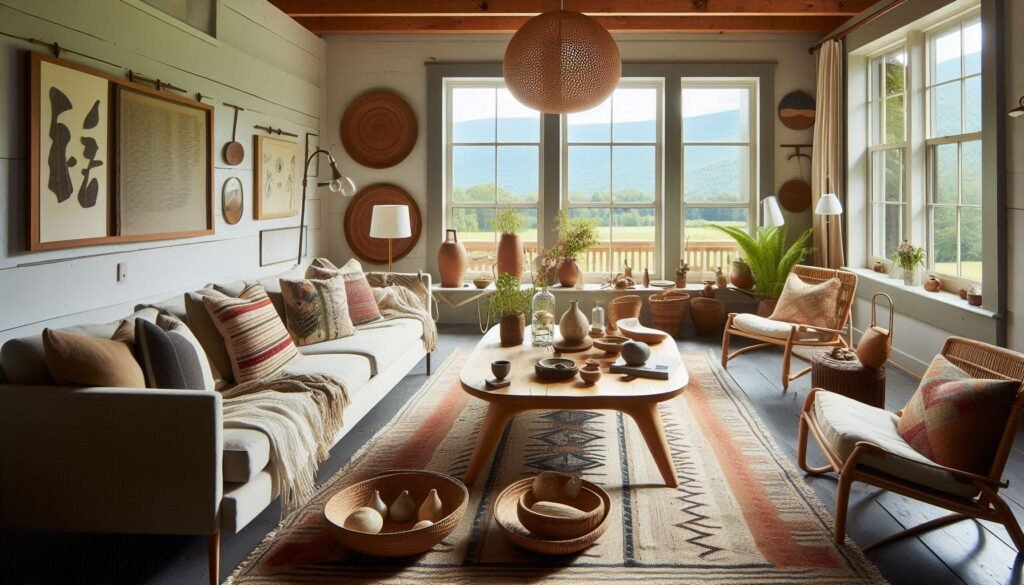
Supporting fair trade companies and local artisans ensures ethical production and reduces shipping emissions.
What to look for
- Certification: Fair Trade, B Corp, or GoodWeave (for rugs made without child labor).
- Local sourcing: Reduce carbon footprint by choosing regionally made furniture like Vermont Woods Studio’s handmade table.
Global collaboration
- Citizenship: Partners with artisans in 20 countries to create ethically sourced, eco-friendly decor.
- Paravel: Offers carbon-neutral luggage and home goods made from recycled materials.
9. Do Circular design and Cut down on waste
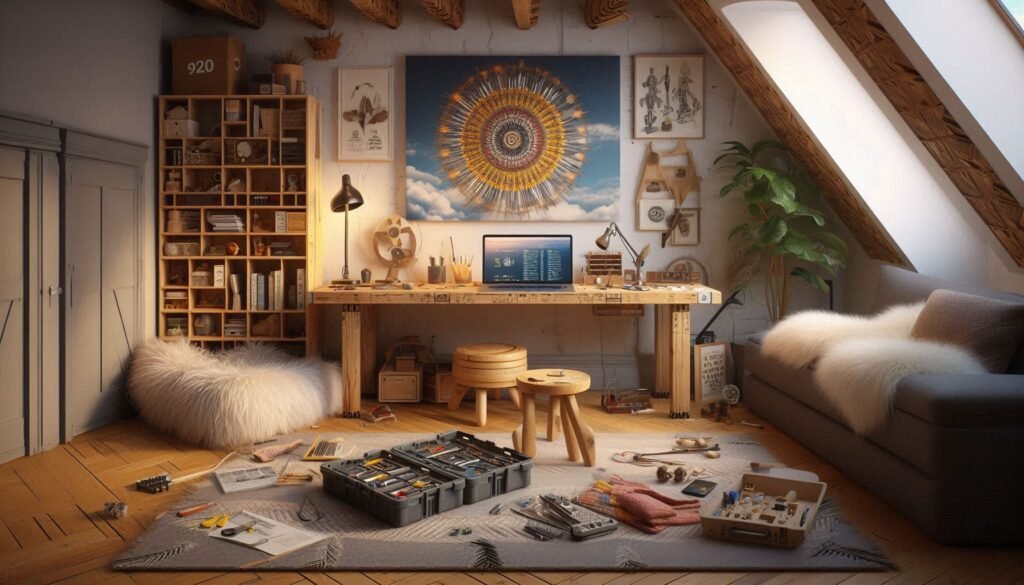
An emerging trend, circular design ensures products are reused, repaired, or recycled at the end of their life cycle.
Rentable and leaseable furniture
- Companies like Feather and Furnish let you rent high-quality furniture, reducing landfill waste during relocation.
Design for disassembly
- Brands like IKEA now sell furniture with modular parts that can be easily repaired or recycled.
10. Sustainable textiles – Fabrics with a future
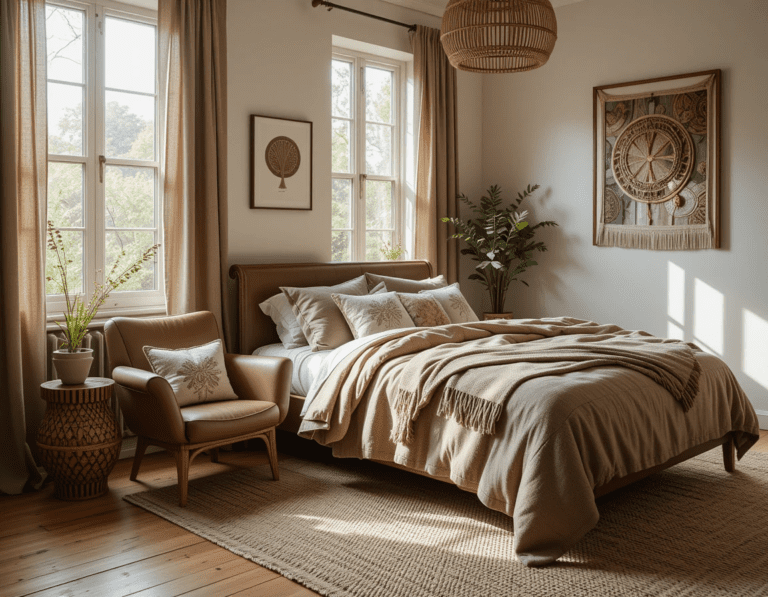
From curtains to cushions, eco-friendly textiles are redefining soft furnishings.
Innovative fabrics
- Pinatex: Made from pineapple leaf fibers, this leather alternative is used in vegan upholstery.
- Mycelium leather: Mushroom-based “leather” by Bolt Threads offers a biodegradable option for chairs and pillows.
Low-impact dyes
- Brands like Coyuchi use plant-based dyes and closed-loop water systems to reduce pollution.
Sure, We Designing a Better Future By Using All These Things
Sustainable interior design is more than just a trend—it’s a commitment to conscious living. By choosing eco-friendly materials, embracing energy efficiency, and celebrating creativity through upcycling, we create spaces that nourish both people and the planet. Whether you’re renovating a kitchen or redesigning a living room, small changes can make a big impact.
As designer William McDonough rightly said, “Design is the first sign of human intention.”
Let’s make that intention sustainable.
By adopting these practices, we don’t just create beautiful homes—we create a legacy of responsibility.
The future of design is green, and it will always be🌿🌿
Frequently Asked Questions(FAQs)
Q. Is sustainable interior design more expensive?
A: Not necessarily! While some eco-friendly materials (e.g., reclaimed wood) have higher upfront costs, others save money long-term (e.g., LED lighting reduces energy bills). Upcycling and DIY projects can also cut costs.
Q. How do I start with sustainable interior design?
A: Audit your space:
- Replace high-impact materials (e.g., plastics) with bamboo, cork, or recycled alternatives.
- Prioritize energy efficiency (smart thermostats, insulation).
Q. What’s the difference between sustainable and regular interior design?
An: Sustainable design prioritizes:
- Ethics: Fair-trade materials, cruelty-free textiles.
- Durability: Longer-lasting, repairable items.
-
Low Impact: Non-toxic finishes, reduced waste.
Q. Can I make my home sustainable on a budget?
A: Yes,
- Thrift: Shop vintage furniture on Facebook Marketplace or Etsy.
- DIY: Repurpose old jars into planters or pallets into shelves.
-
Plants: Improve air quality with low-cost snake plants or pothos.
Q. What colors are trending in sustainable interior design?
A: Earthy tones (sage green, terracotta, warm beige) and muted hues inspired by nature. Use plant-based dyes for textiles.
Join Us
What is your plan for sustainable interior design and how do you implement it to make your home and space beautiful and elegant?
Stay Happy😊Stay Confident##


Elite furniture for exceptional individuals.
Дизайнерская мебель премиум-класса byfurniture.by .